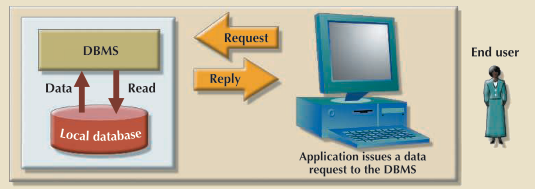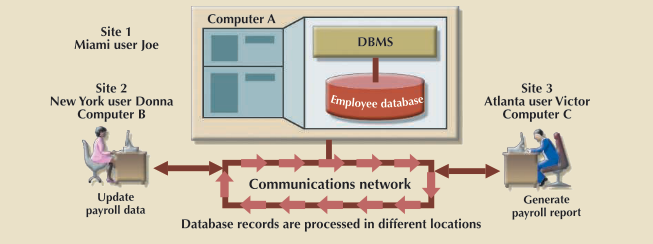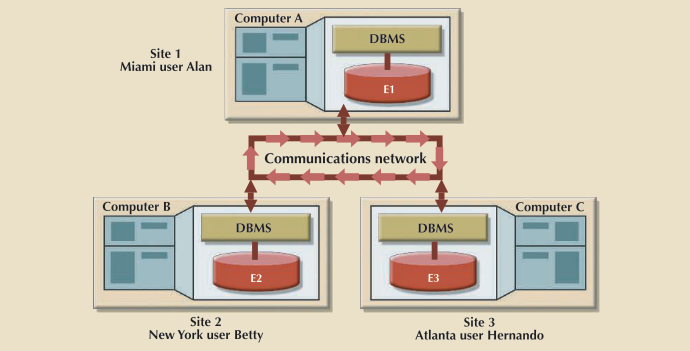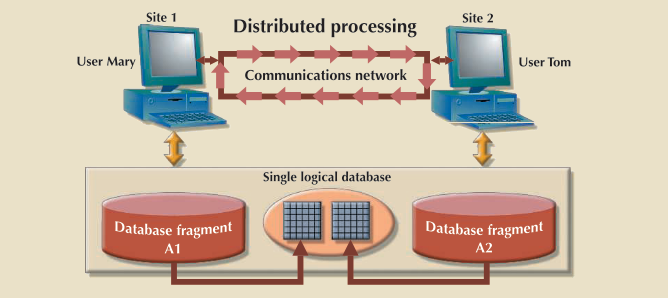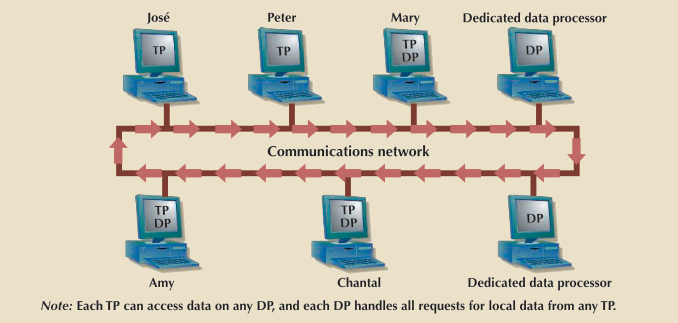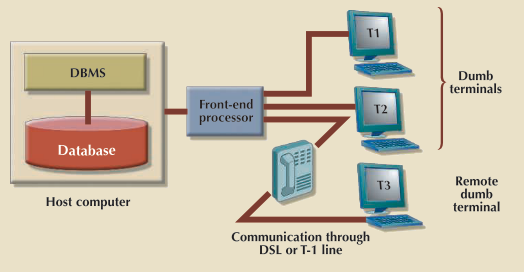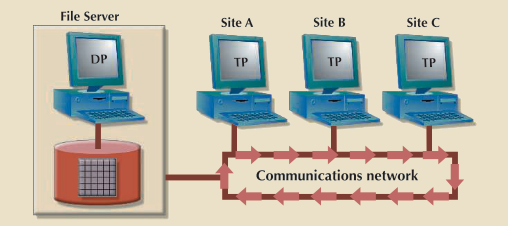Distributed database management system (DDBMS)
A DBMS that supports a database distributed across several different sites;a DDBMS governs the storage and processing of logically related data over interconnected computer systems in which both data and processing functions are distributed among several sites
An example of a Centralized Database Management System
